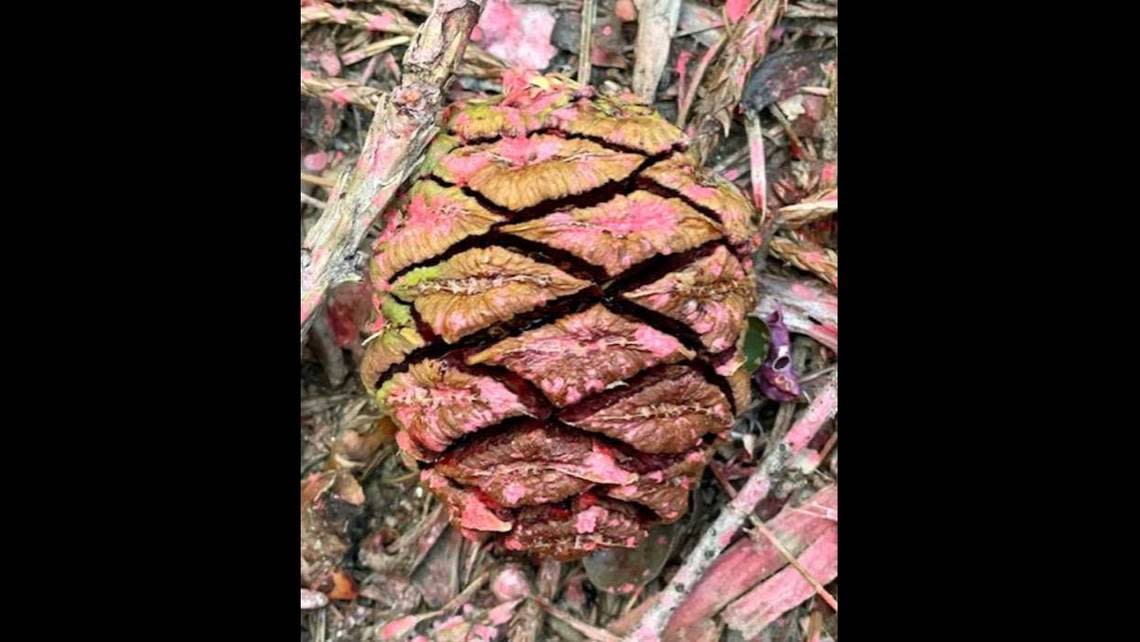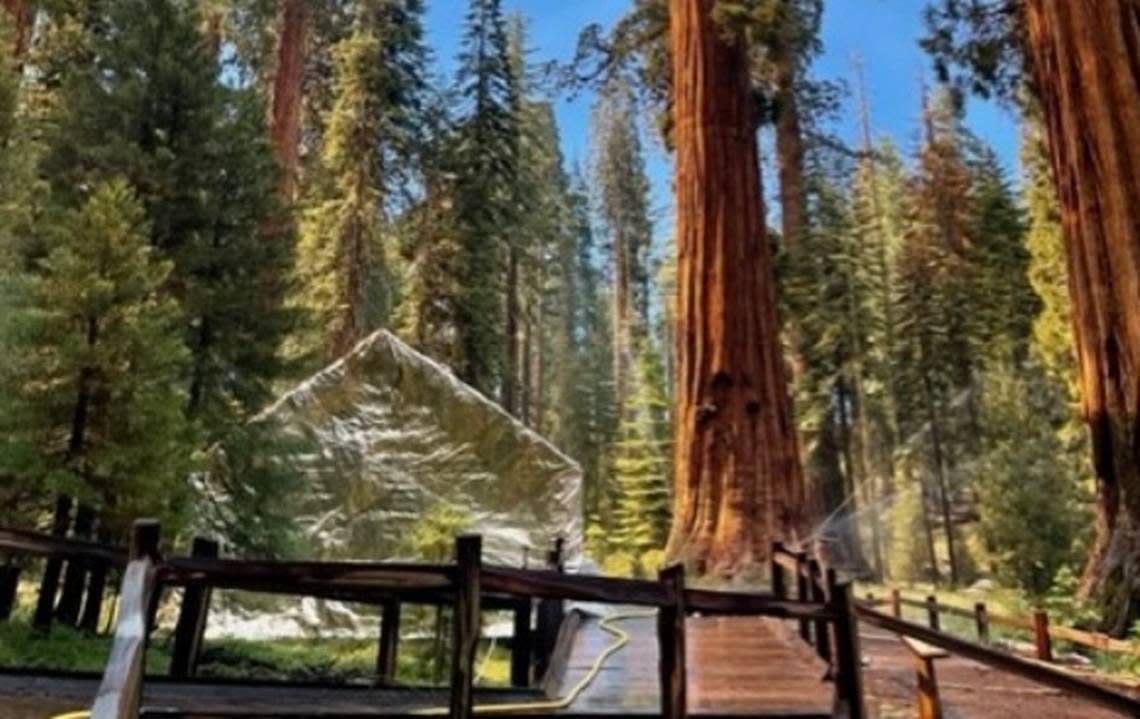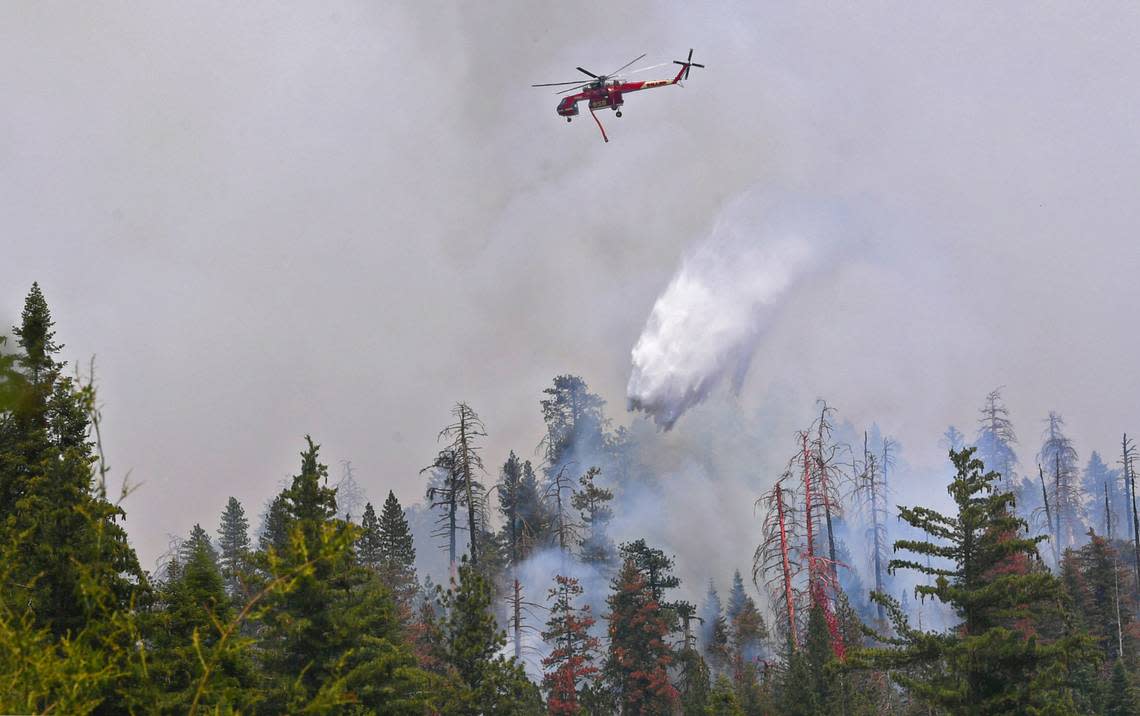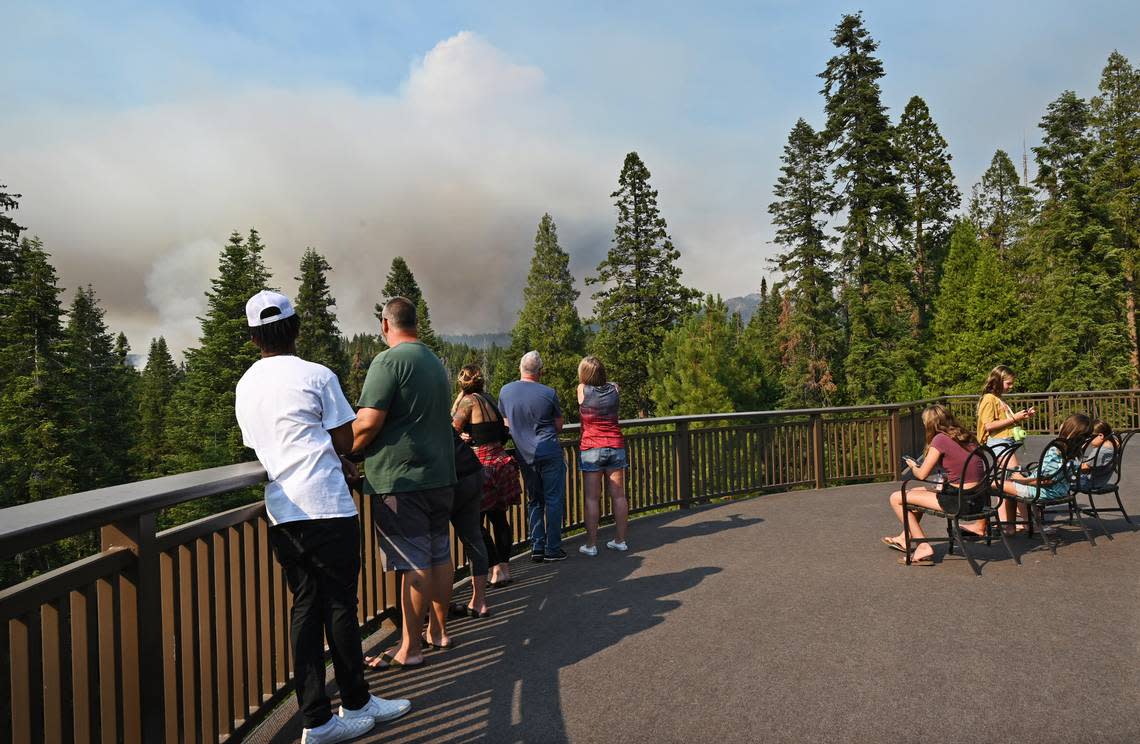Yosemite using aerial tankers, chemicals against wildfire. Why that’s ‘a big deal’ for park
Tinder-dry conditions in Yosemite National Park have prompted firefighters battling the Washburn Fire to call in both air tanker planes to drop fire-retardant chemicals on the wildfire and bulldozers to help create containment lines.
Both the tankers and the ’dozers are considered unusual for firefighting efforts in a national park, where the vast majority of the acreage is designated as wilderness, said Nancy Phillipe, a fire information spokeswoman for Yosemite National Park.
“Obviously this is a full-suppression fire for us,” Phillipe told The Fresno Bee on Sunday. “For us, using retardant (chemicals) is a huge deal because this is wilderness.” National wilderness laws contain strict rules for when such chemicals can be used, she added, and the same is true for the bulldozers.

But both measures were deemed necessary to protect not only the iconic Mariposa Grove of giant sequoia trees that is threatened by the fire, but also the residential enclave of Wawona, inside the park boundaries, where a mandatory evacuation order has been in effect since Friday.
The Wawona community is about three miles from Washburn Fire, which grew in size from about 1,100 acres on Saturday evening to almost 1,600 acres by Sunday morning – an increase of almost 50% overnight. Containment of the fire remained at 0% on Sunday morning.
Between the air tankers and almost a dozen helicopters dropping water on the fire, “it’s been quite an aerial show over Wawona,” Phillipe said.
By Saturday night, about 360 firefighters were working to contain the fire, an increase of about 150 from Friday. Those include hand crews building containment lines around the fire, along with engine crews. That number was expected to keep increasing Sunday as more teams from local, state and federal agencies arrive in the park, Phillipe said.
Dead conifer trees, both standing and down, as well as dry brush on the forest floor after years of drought in the Sierra Nevada are contributing to the fire’s spread.
The fire was first reported Thursday afternoon along the Washburn Trail in the Mariposa Grove, and the grove near the southern entrance to the park from Highway 41 remains evacuated and closed because of the continuing threat of the fire’s spread.
Within the Mariposa Grove, rangers have set up portable sprinkler systems to protect one of the park’s most well-known giant sequoias, the Grizzly Giant. In addition to moistening the forest floor around the tree, Phillipe said, the sprinklers also raise the humidity in the grove to reduce the dry conditions that could fuel flames.
Preparing for fire: The Grizzly Giant is the most renowned giant sequoia in Yosemite National Park. Standing at 209 feet it is the second largest tree in the Yosemite, and one of the most photographed.The Grizzly Giant is in the Mariposa Grove impacted by the Washburn Fire. pic.twitter.com/jnIlm9Gemn
— Yosemite Fire and Aviation Management (@YosemiteFire) July 10, 2022
The Mariposa Grove is the largest stand of massive giant sequoias in Yosemite, with more than 500 mature speciments of the iconic trees. The grove was the first area of what is now Yosemite National Park when President Abraham Lincoln signed legislation in 1864 to protect Mariposa Grove.
Rangers opted against wrapping the base of the Grizzly Giant – a 209-foot-tall, 3,000-year-old sequoia described as the second largest in the grove – and other giant sequoias within Mariposa Grove with a foil-like retardant material for fear of creating more of a “baked potato” effect if flames did sweep through the area, Phillipe said. But, she added, the wrapping was used to envelop a historic cabin in the grove.

Firefighters said that previous prevention efforts within the grove, including prescribed burns and other measures to reduce fuels, could prove beneficial in minimizing the Washburn fire’s threat.


